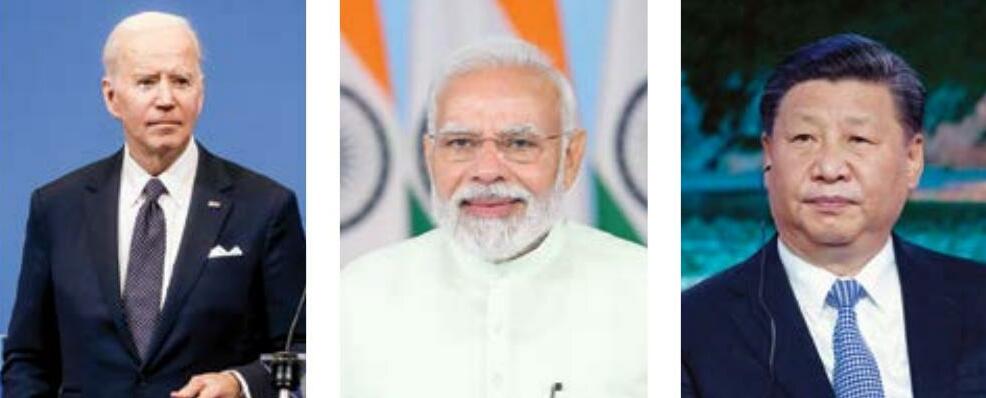
US President Richard Nixon, later disgraced by the Watergate scandal, reflected influential views of the day in Washington when he made disparaging remarks about Prime Minister Indira Gandhi (many of them unprintable). He sent the US Seventh Fleet to the Bay of Bengal in December 1971 to intimidate India during the Bangladesh war.
India was a tiny economy. Food shortages had plagued it through the 1960s. But transactional relationships can change abruptly. As India's economy grew, the West reassessed its geopolitical priorities. President Bill Clinton had imposed harsh sanctions on India following the Pokhran II nuclear test in May 1998. Within two years, on a visit to India, Clinton changed his tune. He saw first-hand how India, then a nascent software power, had used the Y2K dot com crisis to emerge as a potential global technology leader.
The West's discovery of India had begun. The India-US civil nuclear deal in 2008 followed. China was meanwhile quietly stealing US technology and intellectual property rights to propel itself into the world's second-largest economy. In 2000, China's GDP was a mere $1.21 trillion. In 2006, it was $2.76 trillion, less than India's GDP today. But within another eight years, by 2014, Chinese GDP had quadrupled to $10.48 trillion.
Washington, following the Nixon-Kissinger visit to China in 1972, facilitated by Pakistan, had moved decisively against India. It has taken half a century for the US to reverse and rewrite its Indo-Pacific doctrine. While the India-US nuclear deal set the direction of future ties, China's toxic threat dawned only gradually on Washington. It realized belatedly that during former leader Deng Xiaoping's hide-and-bide strategy, China had converted itself into an economic powerhouse by reverse engineering patented US technology.
Diese Geschichte stammt aus der September 24, 2022-Ausgabe von Businessworld India.
Starten Sie Ihre 7-tägige kostenlose Testversion von Magzter GOLD, um auf Tausende kuratierte Premium-Storys sowie über 8.000 Zeitschriften und Zeitungen zuzugreifen.
Bereits Abonnent ? Anmelden
Diese Geschichte stammt aus der September 24, 2022-Ausgabe von Businessworld India.
Starten Sie Ihre 7-tägige kostenlose Testversion von Magzter GOLD, um auf Tausende kuratierte Premium-Storys sowie über 8.000 Zeitschriften und Zeitungen zuzugreifen.
Bereits Abonnent? Anmelden

Technology, AI Driving Warehousing Sustainability
Anshul Singhal on how Welspun One is rapidly transforming Grade-A logistics and industrial parks across India, offering integrated fund development and asset management for large-scale warehousing solutions

DECODING RETAIL'S NEXT FRONTIER
As brands pivot towards omnichannel ecosystems and startups challenge legacy frameworks, the focus sharpens on experiential retail, sustainability and data-driven personalisation.

SORORITY OF WOMEN OF METTLE
Awinter afternoon in mid-December found quite a crowd at the Oxford Book Store on Connaught Place, as bibliophiles congregated at a corner to listen to three women authors, diverse in their passions, but drawn together by an urge to tell their story.

THE LEGACY OF THE AMARNATHS
IN NOVEMBER 2017 the management committee of the Delhi Cricket Association named the eastern stand of the Feroze Shah Kotla ground the Mohinder Amarnath stand.

PUTTING THE POWER IN THE POWERHOUSE
The Asus ExpertBook P5 is powered by an 8-core 8-thread Intel Core Ultra 7 Series 2 processor that clocks a maximum speed of 4.8 GHz, but it does not have hyperthreading. It is light weight, with a smooth glass touch pad. The laptop almost has all the I/O ports you could possibly need in a business laptop, making it an extremely lucrative option for professional computing, says

"We must be aware of our energy and water consumption"
BW Businessworld caught up with actor, philanthropist, and climate warrior BHUMI PEDNEKAR to chat about climate change and more.

"Cooking is a passport to the world"
In conversation with renowned CHEF MANJIT GILL, Advisor at Kikkoman India and President, Indian Federation of Culinary Associations (IFCA). As the former Corporate Chef of ITC hotels, Chef Gill has helped shape iconic restaurants, such as the Bukhara, Dum Pukht, and Dakshin. He has had the privilege of serving former American Presidents Barack Obama, Bill Clinton, George Bush, and the French, Canadian, British and German premiers. In 1992, Chef Gill had the opportunity of being invited to cook for Prince Charles and Lady Diana, at the Palace of the Maharaja of Jaipur. He was awarded the Lifetime Achievement Award from the Ministry of Tourism in 2007.

Strengthening Middle Management for Organisational Resilience
WHAT HOLDS AN organisation together in chaos? Is it visionary leadership, cuttingedge strategies, or robust technology?

The Retail Trailblazers
A look at companies that are making a positive impact on India's growing retail sector with their future fit business and marketing strategies.

Driving Conscious Consumerism
VIDIT JAIN, Co-founder of Kindlife, is leading the charge in revolutionising the intersection of technology and conscious consumerism.